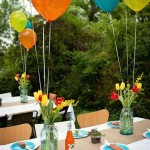Middle Eastern Living Room Decor Ideas: Crafting a Cultural Oasis
The Middle Eastern aesthetic, characterized by its rich history, vibrant colors, intricate patterns, and luxurious textures, offers a distinctive approach to living room decor. It's a style that prioritizes comfort, hospitality, and visual appeal, creating spaces that are both inviting and aesthetically striking. This article explores several key aspects of Middle Eastern interior design, providing ideas and inspiration for incorporating this captivating style into any living room.
Color Palettes: Earthy Tones and Jewel Accents
The foundation of any Middle Eastern living room is its color palette. Earthy tones dominate, reflecting the region's natural landscape. Beige, sand, terracotta, and warm browns create a welcoming and grounded atmosphere. These neutral hues provide a perfect backdrop for more vibrant accent colors.
Jewel tones, inspired by precious stones and spices, add depth and richness to the space. Deep reds, sapphire blues, emerald greens, and amethyst purples can be incorporated through textiles, artwork, and decorative accessories. Golden accents, often seen in lighting fixtures, mirrors, and furniture details, enhance the luxurious feel.
The strategic use of contrast is crucial. For instance, a terracotta-colored wall can be paired with cream-colored seating and sapphire blue cushions. This balance between earthy and vibrant hues prevents the room from appearing either too monotonous or overwhelming.
Consider the specific regional influences when selecting a color palette. Moroccan styles often favor bolder, brighter hues, while Levantine designs may lean towards softer, more muted tones. Researching these nuances can help to refine and personalize the chosen color scheme.
Paint finishes also contribute to the overall aesthetic. Matte or eggshell finishes on the walls create a soft, diffused light, while subtly textured paints can mimic the look of traditional plaster or stucco.
Textiles: Rich Fabrics and Intricate Patterns
Textiles are arguably the most important element in Middle Eastern living room decor. They add warmth, texture, and visual interest, transforming a simple space into a luxurious and inviting haven. The use of high-quality fabrics, such as silk, velvet, linen, and cotton, is essential.
Rugs are particularly significant. Persian rugs, with their intricate patterns and rich colors, are a classic choice. They can be used to define specific areas within the living room, such as the seating area or the dining space. Other types of rugs, such as kilims and dhurries, offer different patterns and textures that complement the Middle Eastern style.
Cushions and throw pillows are another important textile element. They can be used to add color, pattern, and comfort to seating areas. Mixing and matching different sizes, shapes, and textures of cushions creates a layered and visually appealing effect. Consider incorporating cushions made from silk, velvet, or embroidered fabrics.
Upholstery fabrics should be chosen carefully to complement the overall color scheme and aesthetic. Velvet sofas and armchairs add a touch of luxury, while linen or cotton upholstery offers a more relaxed and comfortable feel. Consider using patterned fabrics for accent pieces, such as ottomans or side chairs.
Curtains and drapes can also play a significant role in Middle Eastern living room decor. Heavy drapes made from silk or velvet can add privacy and block out light, while sheer curtains made from linen or cotton can create a soft and airy feel.
Pattern is a key element in Middle Eastern textiles. Geometric patterns, floral motifs, and calligraphic designs are commonly used. These patterns can be incorporated through rugs, cushions, upholstery, and curtains. When mixing patterns, it is important to consider scale and color to create a cohesive look.
Furniture: Low Seating and Elaborate Details
Furniture in Middle Eastern living rooms often emphasizes comfort and hospitality. Low seating arrangements are common, encouraging relaxation and conversation. Floor cushions, ottomans, and low sofas create a casual and inviting atmosphere.
Sofas and armchairs should be upholstered in luxurious fabrics, such as velvet or silk. Consider using tufted upholstery or adding intricate embroidery details. The shape of the furniture can also contribute to the overall aesthetic. Curved lines and rounded edges are often preferred over sharp, angular shapes.
Coffee tables and side tables are typically made from wood, metal, or stone. Intricate carvings, inlays, or metalwork details can add a touch of elegance. Consider using a low coffee table to complement the low seating arrangement.
Storage solutions should be both functional and aesthetically pleasing. Carved wooden chests, patterned cabinets, and decorative shelves can be used to store items while adding to the overall decor. Consider using baskets or trays to organize smaller items.
Accent furniture, such as screens and room dividers, can be used to create separate areas within the living room. These pieces can be made from wood, metal, or fabric and can feature intricate patterns or carvings.
Lighting is crucial in setting the mood of a Middle Eastern living room. Ornate chandeliers, sconces, and lanterns can be used to create a warm and inviting glow. Consider using dimmer switches to adjust the lighting to suit different occasions.
Decorative Accessories: Art, Lighting, and Personal Touches
Decorative accessories provide the finishing touches to a Middle Eastern living room, adding personality and visual interest. These elements help to create a space that is both beautiful and reflective of personal taste.
Artwork is a significant element. Calligraphy, intricate mosaics, and paintings depicting scenes from Middle Eastern history or mythology can be displayed on the walls. Consider framing artwork in ornate gold or silver frames to enhance its visual impact.
Metalwork is another important decorative element. Brass, copper, and silver trays, bowls, and lanterns can be used to add a touch of elegance. Intricate engravings and geometric patterns are commonly found on metalwork pieces.
Ceramics and pottery can also be used to add color and texture to the living room. Hand-painted plates, bowls, and vases can be displayed on shelves or tables. Consider using pieces with traditional Middle Eastern patterns or motifs.
Greenery can bring life and freshness to the space. Potted plants, such as ferns, orchids, and palms, can be placed in corners or on tables. Consider using ornate plant stands to elevate the plants and add to the overall aesthetic.
Mirrors are often used to enhance the sense of space and light in a Middle Eastern living room. Large mirrors with ornate frames can be hung on the walls to reflect light and create a more open feel. Smaller mirrors can be grouped together to create a decorative display.
Lighting fixtures are essential in creating the right ambiance. Chandeliers, sconces, and lanterns can be used to provide both ambient and accent lighting. Consider using fixtures made from brass, copper, or glass with intricate designs.
Personal touches, such as family photos, travel souvenirs, and handmade items, can add to the warmth and personality of the living room. These items can be displayed on shelves, tables, or walls to create a space that is truly unique.
Layout and Spatial Arrangement: Creating a Welcoming Space
The layout of a Middle Eastern living room is designed to encourage conversation and create a welcoming atmosphere. The arrangement of furniture, lighting, and decorative accessories should be carefully considered to achieve this goal.
A central seating area is typically the focal point of the living room. This area should be comfortable and inviting, with ample seating for guests. The arrangement of sofas, armchairs, and cushions should encourage conversation and interaction.
Consider creating multiple seating areas within the living room. A smaller, more intimate seating area can be created near a fireplace or window. This area can be used for reading, relaxing, or having private conversations.
The placement of lighting fixtures should be carefully considered to create the desired ambiance. Chandeliers can be used to provide ambient lighting, while sconces and lanterns can be used to provide accent lighting. Consider using dimmer switches to adjust the lighting to suit different occasions.
The flow of traffic within the living room should be smooth and unobstructed. Avoid placing furniture in a way that blocks doorways or pathways. Consider using rugs to define different areas within the living room and guide the flow of traffic.
Pay attention to the natural light in the living room. Maximize the amount of natural light by keeping windows clear and using sheer curtains. If the living room receives limited natural light, consider using mirrors to reflect light and create a brighter feel.
The overall layout of the living room should be balanced and harmonious. Avoid creating too much clutter or overcrowding the space. A well-organized and thoughtfully designed living room will create a welcoming and inviting atmosphere.
Adapting Middle Eastern Decor to Modern Homes
Incorporating Middle Eastern decor into modern homes requires a balance between traditional elements and contemporary sensibilities. It is crucial to adapt the style to suit the existing architecture and personal preferences, avoiding a purely thematic or theatrical approach.
One approach is to integrate subtle hints of Middle Eastern design through specific pieces. A Persian rug, a collection of intricately patterned cushions, or a brass coffee table can add a touch of Middle Eastern flair without overwhelming the space. These elements can be combined with modern furniture and accessories to create a unique and eclectic look.
Another strategy is to focus on the color palette. Earthy tones can be used as a neutral base, while jewel-toned accents can be incorporated through artwork, textiles, and decorative accessories. This approach allows for a more subtle and sophisticated interpretation of Middle Eastern style.
Consider incorporating modern materials and finishes that complement the Middle Eastern aesthetic. For example, a concrete floor can be paired with a traditional Persian rug and velvet sofa. Or, a modern glass coffee table can be combined with brass lanterns and ceramic vases.
It is also important to consider the scale of the furniture and accessories. In smaller spaces, it is best to avoid overly large or ornate pieces. Instead, opt for smaller, more streamlined furniture and accessories that can be easily integrated into the existing decor.
Lighting can play a crucial role in adapting Middle Eastern decor to modern homes. Consider using a combination of ambient, task, and accent lighting to create a warm and inviting atmosphere. Modern LED lighting can be used to highlight specific features of the decor, such as artwork or textiles.
Ultimately, the key to successfully incorporating Middle Eastern decor into modern homes is to strike a balance between traditional elements and contemporary sensibilities. By carefully selecting and integrating specific pieces, colors, and materials, it is possible to create a space that is both beautiful and reflective of personal style while maintaining the spirit of Middle Eastern design.

Middle Eastern Interior Design Trends And Home Decorating Ideas Living Room Nook Miller Homes Sunken

Middle Eastern Diy Home Décor Ideas

Middle Eastern Diy Home Décor Ideas Элегантный декор дома Интерьер в азиатском стиле Декор спальни

Arabic Decor Get A Luxurious Living Room With These Amazing Ideas

5 Luxury Arabian Style Home Decor Ideas

Middle Eastern Interior Design Trends And Home Decorating Ideas Asian Decor

Middle Eastern Diy Home Décor Ideas

Middle Eastern Diy Home Décor Ideas

370 Best Middle Eastern Decorating Style Ideas Design Moroccan Interiors

Top 5 Arabic Living Room Inspirations For Your Home Love Happens Mag
Related Posts







